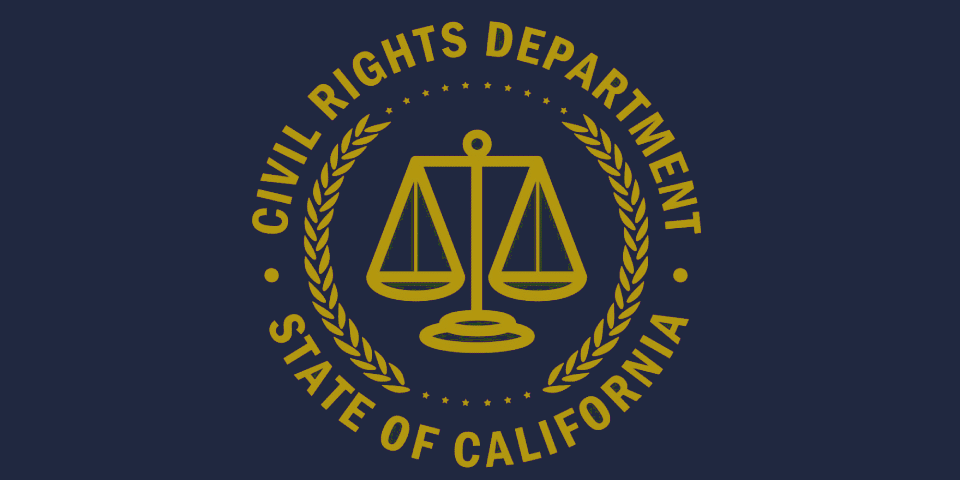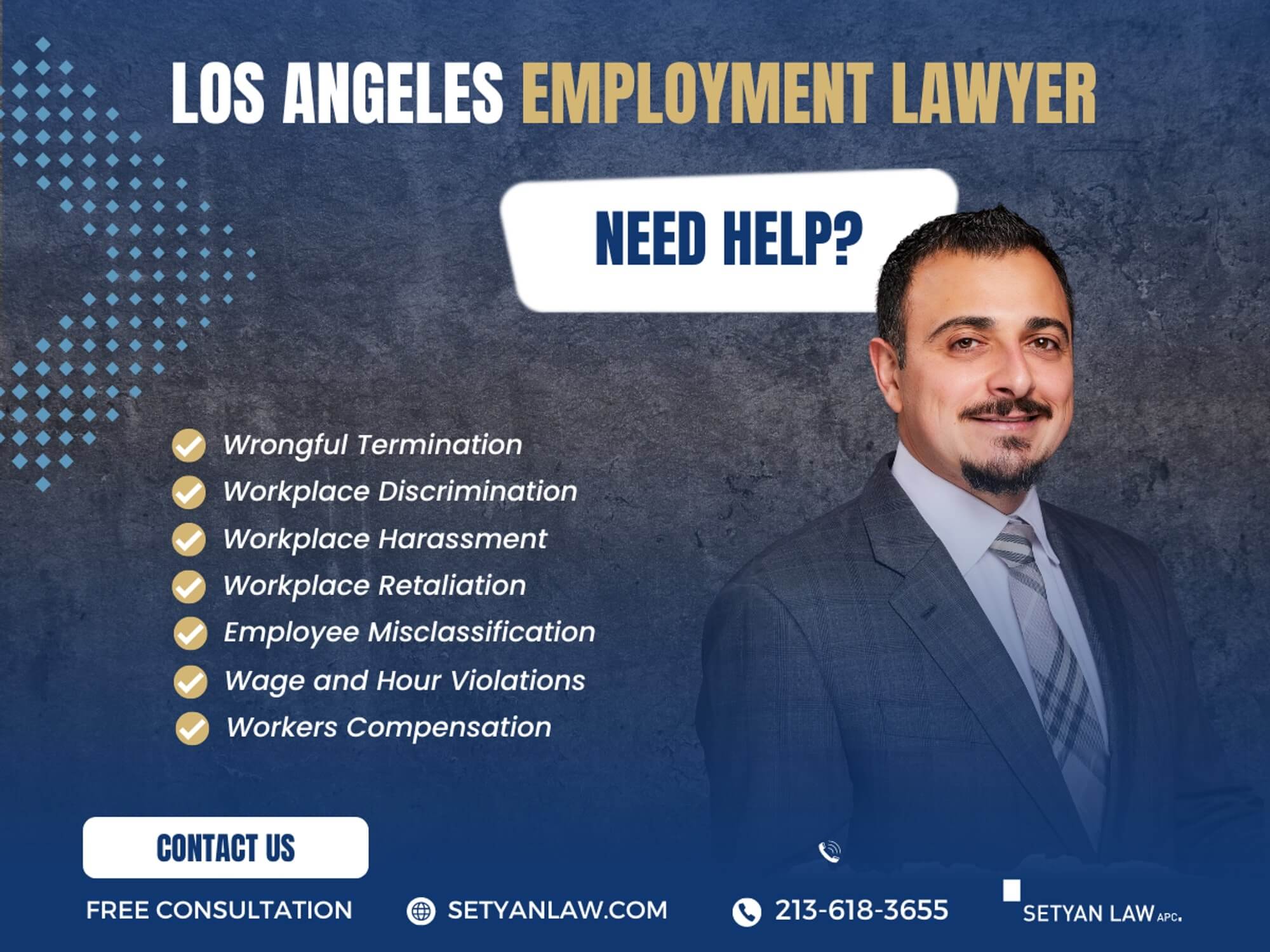Updated October 13, 2025
Timeline for Filing a CRD Complaint [2025 Guide]
Facing workplace discrimination and wondering how to file a CRD Complaint correctly? You're not alone. Each year, thousands of California employees take this crucial step toward workplace justice.
Unfortunately, navigating the complaint process can feel overwhelming. The Department of Fair Employment and Housing (DFEH) – recently renamed the Civil Rights Department (CRD) – offers protection against discrimination, harassment, and retaliation. However, many valid cases fail due to procedural errors or missed deadlines.
This comprehensive guide breaks down the entire CRD Complaint process into manageable steps. You'll learn who qualifies for protection, how to prepare your documentation, the correct filing procedures, what happens during investigation, and the potential outcomes of your case. Importantly, we'll highlight critical deadlines you can't afford to miss.
Whether you're experiencing discrimination based on race, gender, disability, or other protected characteristics, this step-by-step walkthrough will help maximize your chances of a successful resolution.
Step 1: Understand If You Qualify to File
Before filing a DFEH (now CRD) complaint, you need to determine if your situation qualifies for protection under California law. The Fair Employment and Housing Act (FEHA) provides comprehensive protections against workplace discrimination, harassment, and retaliation—often stronger than federal laws.
Who is protected under FEHA
California's FEHA applies to employers with five or more employees, making it more inclusive than many federal protections that only cover workplaces with fifteen or more employees [1]. This means significantly more California workers receive protection under state law than federal law.
FEHA protects individuals based on numerous characteristics, including:
- Race and color
- Religion (including religious dress and grooming practices)
- Sex/gender (including pregnancy, childbirth, and breastfeeding)
- Gender identity and gender expression
- Sexual orientation
- Marital status
- National origin and ancestry
- Physical or mental disability
- Medical conditions (including cancer or history of cancer)
- Genetic information
- Military or veteran status
- Age (40 and over)
- Request for family care leave or medical leave [2][2]
Notably, FEHA protections extend to job applicants, current employees, and since 2015, unpaid interns [3]. Independent contractors, family members of employers, and people employed under special licenses in nonprofit sheltered workshops are generally not covered [3].
Types of violations covered
FEHA prohibits discrimination across virtually all employment practices. Specifically, employers cannot discriminate in:
- Hiring, firing, and promotion decisions
- Compensation and benefits
- Training opportunities
- Working conditions
- Job advertisements and application processes
- Transferring or separating employees [2]
Additionally, FEHA covers harassment based on protected characteristics, which is prohibited in all workplaces—even those with fewer than five employees [2]. Furthermore, employers cannot retaliate against workers who report discrimination, participate in investigations, or support colleagues' claims [4].
The law also requires reasonable accommodations for disabilities and pregnancy-related conditions, as well as protects leave rights under the California Family Rights Act.
When to consider legal action
You should consider filing a CRD Complaint if you've experienced discrimination, harassment, or retaliation based on a protected characteristic. Remember that filing an administrative complaint is not optional—it's a mandatory first step before pursuing a lawsuit [1].
The timing of your complaint is critical. While the statute of limitations for filing may vary, generally you must file your complaint within one year of the discriminatory act [5]. Filing promptly preserves your right to sue under both state and federal laws.
For many Californians, filing with DFEH/CRD rather than the federal EEOC offers significant advantages:
- More robust protections under California law
- Broader definitions of what constitutes discrimination
- No cap on noneconomic damages like pain and suffering [1]
- More cost-effective than initially pursuing a private lawsuit [6]
If internal reporting to your company's HR department doesn't resolve the issue, or if you've already been terminated, filing with CRD is typically your best course of action [7]. After filing, the agency will determine if your complaint falls under their jurisdiction before proceeding with an investigation.
California Workers: Call Setyan Law at (213)-618-3655 to schedule a free consultation.
Step 2: Prepare Before Filing
Once you've confirmed your eligibility to file a discrimination complaint, proper preparation becomes crucial for success. The steps you take before submitting your CRD (formerly DFEH) complaint can significantly impact your case outcome.
Consult an employment attorney
Seeking legal counsel early in the process offers substantial benefits. An experienced employment attorney can:
- Evaluate whether your situation qualifies under California's Fair Employment and Housing Act
- Navigate the complex landscape of employment law
- Provide personalized support to strengthen your case
- Help determine the best path forward with your complaint
It's advisable to find an employment attorney willing to take your case before you receive your right-to-sue notice. Otherwise, you might struggle to find representation before your deadline to file a lawsuit. Employment attorneys can also help you understand the exhaustion of administrative remedies requirement, which mandates filing with a government agency before pursuing court action.
Gather documentation and evidence
Documentation forms the backbone of any workplace discrimination or harassment case. The types of evidence you collect depend on your specific situation, but may include:
- Written witness statements detailing the date, time, location, and specific discriminatory actions observed
- Emails or text messages containing harassing or discriminatory language (save digital copies and print physical backups)
- Performance reviews, especially those showing sudden changes after reporting discrimination
- Medical records documenting physical or emotional harm resulting from workplace issues
- Complaints filed internally and any related investigation documents
- Personnel files containing job assignments, promotions, pay information, and disciplinary actions
- Time and attendance records showing schedule changes or missed work due to harassment
Important: Never remove documentation from the workplace that is considered company property or confidential. Instead, consult with HR or your attorney about proper evidence collection procedures.
Decide between CRD and EEOC or dual filing
California employees typically have the option to file with either the state's Civil Rights Department (formerly DFEH) or the federal Equal Employment Opportunity Commission (EEOC). Each agency has different advantages:
CRD (formerly DFEH) advantages:
- Accepts complaints against employers with five or more employees (versus EEOC's 15-employee minimum)
- Offers broader protections and longer filing deadlines than federal law
- Enforces California-specific protections not covered federally
EEOC advantages:
- Provides access to federal court and federal law remedies
- May be preferred for certain types of discrimination cases
Consequently, you don't need to file with both agencies. Thanks to a work-sharing agreement between CRD and EEOC, filing with one agency automatically shares your complaint with the other. The agency you initially file with typically retains and processes your case, although in some circumstances it may transfer to the other agency.
Above all, remember that whichever agency you choose, you must provide:
- Specific facts about the discriminatory incidents
- Contact information for the person/entity who harmed you
- Copies of relevant documents and evidence
- Names and contact information of witnesses (if available)
Step 3: File Your Complaint with CRD
Filing a complaint with California's Civil Rights Department requires attention to detail and proper procedure. After gathering your evidence and consulting with an attorney, you're ready to officially submit your complaint. The CRD (formerly DFEH) offers multiple filing options, though each varies in efficiency and processing time.
How to access the online portal
The California Civil Rights System (CCRS) portal provides the fastest and most efficient method for submitting your CRD Complaint. Primarily, online filing offers several advantages:
- Self-service appointment scheduling and rescheduling
- Ability to upload supporting documentation directly
- Option to pause and resume filing within 30 days
- Immediate transmission to CRD staff [8]
To begin the online filing process:
- Visit the official CRD website at https://calcivilrights.ca.gov/complaintprocess/
- Register for a CCRS account using a valid email address
- Select the appropriate intake form that matches your complaint type (typically "Employment" for workplace issues)
- Follow the system's guided walkthrough [8] [9]
For those unable to file online, alternative methods include submitting complaints via mail (to 651 Bannon Street, Suite 200, Sacramento, CA 95811), email, phone (800-884-1684), or in person at a CRD office. Nevertheless, these methods typically extend processing time [8] [10].
What information to include
The CRD requires specific information to properly evaluate your complaint. Prepare to provide:
- Complete details about discriminatory incidents, including precise dates
- Names and contact information of individuals who harmed you
- Contact information for any witnesses to the incidents
- Copies of documents or evidence related to your complaint [11] [12]
If you cannot immediately gather all required information, you can still initiate the filing process through CCRS and supplement details later. Your unfiled complaint remains accessible in the system for 30 days [11].
Upon submission, a CRD representative will contact you for an intake interview. Throughout this telephone conversation, you'll answer questions about what happened. If the investigator determines your claim is valid, they will provide a formal complaint form describing the events. After verifying its accuracy, sign and return it to CRD, who will then serve it on your employer (the respondent). Your employer has 30 days to respond [2].
Requesting a Right-to-Sue letter
A Right-to-Sue letter formally acknowledges your right to file a lawsuit in court. Yet, requesting this letter immediately versus allowing CRD to investigate involves important strategic considerations:
Immediate request: If you already have legal representation and want to bypass the CRD investigation, you can request this letter immediately [9]
Post-investigation: Alternatively, CRD can issue this letter after completing their investigation if they decide not to represent you in court [2]
According to the CRD, requesting an immediate Right-to-Sue letter is "advisable only if you have an attorney" [10]. Once received, you typically have one year to file a lawsuit under California law, compared to just 90 days for EEOC federal cases [13] [12].
Remember that filing with CRD is a mandatory first step before pursuing a lawsuit under FEHA, as you must exhaust your administrative remedies [1]. The CRD will subsequently decide whether to:
- Find no violation and issue a Right-to-Sue letter
- Determine the case has merit and represent you against your employer
- Find merit but decline to intervene, issuing a Right-to-Sue letter [2]
If your claim proceeds to court, you may seek remedies including back pay plus interest, job reinstatement, compensation for pain and suffering, attorney's fees, and potentially punitive damages [2].
Step 4: What Happens After You File
After submitting your CRD complaint, a structured process unfolds that determines the trajectory of your case. Understanding each phase helps you navigate the system effectively and increases your chances of a favorable outcome.
The intake interview process
The CRD process officially begins with an intake interview shortly after you file your complaint. During this critical phone conversation, a CRD representative will:
- Ask detailed questions about your discrimination allegations
- Evaluate whether your situation falls under laws the department enforces
- Determine if a formal complaint can be accepted for investigation [11]
Be prepared to provide specific dates when you believe discrimination occurred and share any supporting documentation. If the representative determines your claim is valid, they will draft a formal complaint describing the events for your signature [2]. After you sign and return this document, the CRD will serve it on your employer, who then has 30 days to respond [2].
How CRD investigates your case
Once your complaint is accepted, CRD conducts an independent investigation. Importantly, the department acts as an objective fact-finder rather than your representative [7]. During this stage:
CRD investigators gather evidence from multiple sources, typically including:
- Interviews with complainants, respondents, and witnesses
- Review of relevant documents and records
- Analysis of workplace policies and practices [11]
Investigations may occur on-site or through telephone interviews, with CRD having authority to conduct interviews under oath, issue subpoenas, and seek temporary restraining orders when necessary [7]. Most investigations take up to one year to complete, after which CRD retains records for three years [7].
Mediation and settlement options
Mediation offers an opportunity to resolve your complaint without a lengthy investigation or litigation. Fundamentally, this voluntary process:
- Can be accepted at any point after filing through the closure of your complaint [14]
- Occurs early in the process before significant legal expenses accrue [3]
- Provides a neutral mediator focused exclusively on complaints within CRD's jurisdiction [14]
Each year, these mediations result in millions of dollars in direct relief for affected Californians [14]. The process typically involves a joint session where both parties can share their perspectives, followed by the mediator facilitating communication to help each side recognize the strengths and weaknesses of their case [3].
If settlement occurs, the result is a legally enforceable contract that fully resolves the matter. Alternatively, if no agreement is reached, your complaint returns to the CRD enforcement division for continued investigation [3].
Step 5: Know the Timeline and Legal Outcomes
Understanding critical timelines and potential outcomes of your CRD complaint directly impacts your chances for workplace justice. Timely action and realistic expectations are keys to navigating this process effectively.
Filing deadlines and statute of limitations
California law establishes strict deadlines for discrimination claims. You must file your CRD complaint within three years from the date of the alleged discrimination [15]. Missing this deadline, even by a single day, typically means forfeiting your right to pursue legal action [16].
After receiving your right-to-sue notice, you have one year to file a lawsuit in California Superior Court [17]. This differs from federal EEOC complaints, which provide only 90 days to file suit [18].
The statute of limitations begins when you knew or reasonably should have known about the discriminatory act [19]. For instance, if you learn about being passed over for promotion weeks after the decision, the clock starts upon your discovery, not when the decision was made.
Possible resolutions and compensation
If your case succeeds, compensation may include:
- Economic damages: back pay, lost bonuses, missed promotions, lost benefits [20]
- Emotional distress damages [20]
- Punitive damages for particularly egregious discrimination [21]
- Job reinstatement [4]
- Policy changes at your workplace [4]
- Required training for managers and staff [22]
Monetary settlements vary widely. Indeed, many employers choose to settle before trial to avoid costly litigation and negative publicity [20]. One example case resulted in a $30,000 settlement plus attorney fees [22].
What to do if CRD closes your case
Should CRD close your case without finding a violation, you still retain options. Primarily, you'll receive a right-to-sue letter allowing you to pursue a private lawsuit [2].
Alternatively, you can appeal CRD's decision within ten calendar days of receiving your closure letter [11]. The appeal should address why you believe the investigation was insufficient rather than simply rehashing your case [23].
Regardless of CRD's determination, consulting with an employment attorney about your specific situation remains advisable to evaluate the strength of your potential lawsuit [23].
Conclusion
Taking action against workplace discrimination requires courage and knowledge of the legal process. Filing a CRD (formerly DFEH) complaint serves as your pathway to workplace justice in California. Throughout this guide, we've walked through each critical step of the complaint process, from determining your eligibility to understanding potential outcomes.
Remember, California offers stronger protections than federal law, covering more employers and a broader range of discriminatory practices. Nevertheless, these protections only work when you follow proper procedures and meet strict deadlines. Most importantly, you must file your complaint within three years of the alleged discrimination, or you risk losing your right to legal recourse altogether.
Documentation proves essential to building a strong case. Therefore, gather emails, performance reviews, witness statements, and other evidence that supports your claim before filing. Additionally, consulting with an employment attorney early in the process significantly improves your chances of success.
The CRD complaint system might seem overwhelming at first glance. However, breaking it down into manageable steps makes the process more approachable. Whether you choose to request an immediate right-to-sue letter or allow the CRD to investigate your case, understanding all available options helps you make informed decisions about your situation.
Undoubtedly, workplace discrimination takes both financial and emotional tolls. Still, the CRD process provides a structured path toward resolution, potentially resulting in compensation for lost wages, emotional distress, or even policy changes that protect future employees.
Filing a discrimination complaint marks just the first step in standing up for your workplace rights. Though the road ahead may be challenging, equipped with the knowledge from this guide, you now have the tools to navigate the process effectively and pursue the justice you deserve.
Why Choose Setyan Law, APC?
Consulting a wrongful termination attorney will provide you with the necessary guidance and support to navigate the legal process effectively. Remember, time is of the essence, so seek legal advice promptly to maximize your chances of a successful outcome.
California Workers: Call Setyan Law at (213)-618-3655 to schedule a free consultation.





